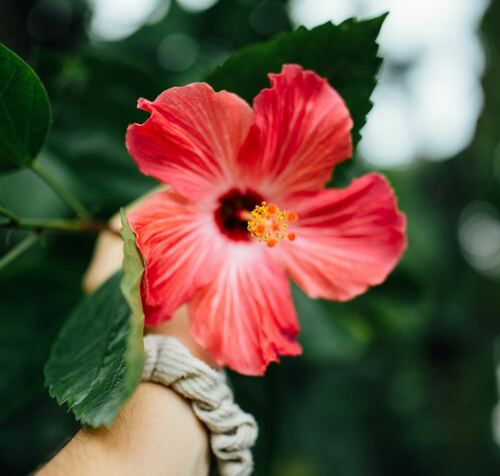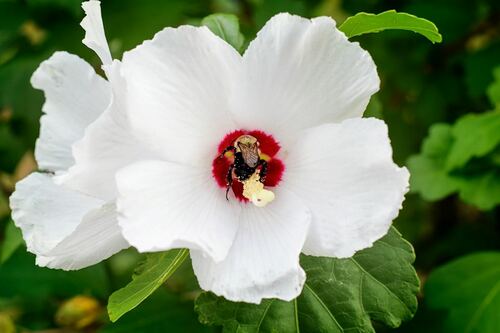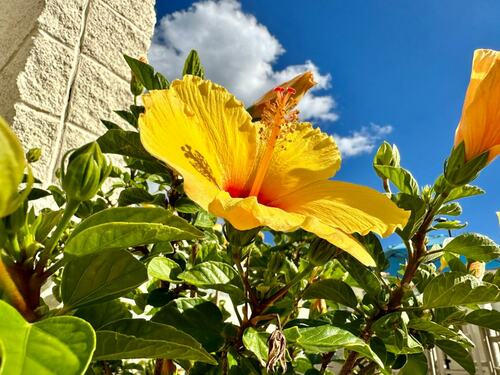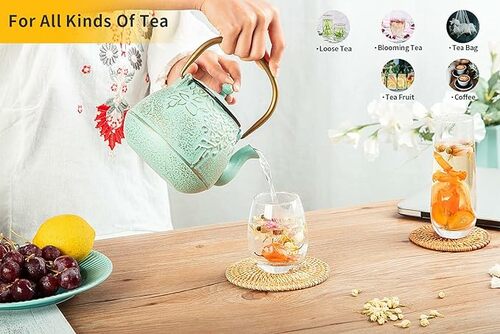Hibiscus 101: Complete Guide to Varieties, Growing, Health Benefits, and Tea
Introduction
Hibiscus, a vibrant and versatile plant, is renowned for its striking flowers and various uses. Native to warm, temperate, subtropical, and tropical regions, hibiscus plants are cultivated worldwide for their beauty and utility. They are often used in gardens, as ornamental plants, and in herbal teas. In this article, we will explore the different varieties of hibiscus, how to grow and prune them, their health benefits, and the popular hibiscus tea.
VARIETIES
There are about 220 to 300 different species of hibiscus, which means there’s a huge variety to choose from. These plants come in many types, colors, and sizes. The three main groups are tropical hibiscus, perennial hibiscus (also called rose mallow), and hardy hibiscus shrubs (like rose of Sharon or althea). Tropical hibiscus, like the Chinese hibiscus, has big, showy flowers that can be red, pink, yellow, or orange. These need warm weather all year. Perennial hibiscus, or rose mallow, can survive colder winters and often has huge flowers. The hardy hibiscus shrubs, like the rose of Sharon, are tough plants that can grow in colder places and form bushes or small trees. Some special types, like the roselle, are grown for their tasty fruit, while others, such as the swamp hibiscus, love to grow near water. With so many different kinds, hibiscus plants offer something for almost every garden, from colorful flowers to interesting leaves and shapes.
HOW TO GROW AND PRUNE

A Hibiscus Flower Held in a Person’s Hand – Photo by Heather Morse on Unsplash
To grow hibiscus well, you need to keep an eye on a few different things like soil, sunlight, and watering. First, you need to make sure the soil is loose and can drain water easily. It should also have a neutral or slightly acidic pH . Hibiscus plants like lots of sunlight, which helps them grow and make better, more beautiful flowers. It’s important to water the plant often enough to keep the soil damp, but make sure not to water it too much, because that can harm the plant.
It’s best to prune hibiscus plants in the early spring before new leaves start to grow. Cut off any dead or weak branches when you trim the plant—this helps the plant grow better and lets air move around it more easily. Pruning also lets you control how big the plant gets and what shape it has. If you follow these guidelines, your hibiscus plants will stay healthy, beautiful, and productive throughout the growing season.
USES

A Bee Pollinates a Hibiscus Bloom – Photo by Davies Designs Studio on Unsplash
Hibiscus isn’t just a pretty flower—it’s also very useful! People have found many ways to enjoy and benefit from hibiscus plants. In this section, we’ll explore some of the interesting and sometimes surprising uses for hibiscus. From tasty drinks to natural medicines, hibiscus has a lot to offer. Let’s dive in and discover the many ways this colorful plant can be used in our daily lives.
HEALTH BENEFITS
Hibiscus is not just a pretty plant; it can also be good for your health in many ways:
- Rich in Antioxidants: Hibiscus is packed with antioxidants, which help your body fight off things that damage your cells and make you sick.
- Lowers Blood Pressure: Studies have shown that hibiscus tea can help lower blood pressure in people with mild hypertension.
- Supports Liver Health: Hibiscus extract has been found to improve liver health by increasing the production of detoxifying enzymes.
- Aids in Weight Loss: Hibiscus tea can help people lose weight by boosting metabolism.
Remember though, while hibiscus can be good for you, it’s not a magic cure. It’s always best to eat a balanced diet, exercise, and talk to a doctor about any health concerns you have.
HIBISCUS TEA
Hibiscus tea is a tasty drink made from hibiscus flowers. It naturally has no calories or caffeine and has a lot of polyphenols, which are healthy plant compounds. The tea has a sweet and tart flavor that many people like. To make it, you soak dried hibiscus flowers in hot water for a bit, and it turns a very deep, pretty red. Some people add sugar or honey to make it sweeter.
Hibiscus tea might be good for your health in many ways. It could help lower high blood pressure and bad cholesterol, cut down blood sugar, help with weight, and balance hormones. It might be extra helpful for people with high blood pressure or blood sugar, or for women dealing with PMS or menopause issues. Be careful if you already have low blood pressure though, as it might make it even lower. Also, hibiscus tea can mix badly with some medicines, like Tylenol. So, it’s a good idea to ask a doctor before you start drinking a lot of hibiscus tea, especially if you take medicine or have health problems.
Conclusion

A Large Yellow Hibiscus Flower – Photo by Ted Balmer on Unsplash
Hibiscus is a great plant that can do many things, like making gardens look pretty and helping people stay healthy. From gardeners to the health-conscious, hibiscus plants are good for everyone! From its many different types to the many things you can do with it, hibiscus is an interesting plant that’s with exploring and enjoying.
FAQ:
Are hibiscus plants perennials?
Yes, hibiscus plants can be perennials and are also known as rose mallow or hardy hibiscus.
What is hibiscus tea is good for?
Hibiscus tea is popular for its potential health benefits. It may help with heart health by lowering blood pressure and reducing bad cholesterol. Some studies also suggest it could aid in weight management. Rich in vitamin C, it can boost your immune system and may improve skin health. The tea is full of antioxidants that fight harmful molecules in your body and might help reduce inflammation. Some people drink it to aid digestion, improve mood, and lessen anxiety. It’s often enjoyed as a refreshing cold drink in hot weather. However, it’s important to remember that while hibiscus tea has these potential benefits, it’s not a miracle cure. It’s best to drink it as a part of a healthy diet and lifestyle. Always check with a doctor before using it for health reasons, especially if you’re on medication or pregnant.
When does hibiscus bloom?
Hibiscus plants usually bloom in warm weather. Most flower from late spring to early fall. Some types can bloom all year if it’s warm enough, though. Tropical hibiscus plants, often kept as houseplants , can make new flowers every day if they get enough light and warmth. The hardy hibiscus, which can live through cold winters, usually starts blooming in midsummer. The exact blooming time depends on the type of hibiscus, the weather, and how it’s cared for. To get lots of flowers, hibiscus needs plenty of sun, water, and good soil. With the right care, many hibiscus plants can have flowers for several months every year.
Where does hibiscus come from?
Hibiscus plants come from many warm places around the world. There are over 200 types of hibiscus plants. They originally grew in tropical parts of Asia, Africa, and the Americas. Some even come from warm areas in Europe. These plants love warm weather and lots of sun. Over time, people have moved hibiscus to new places, so now you can find them growing in most warm parts of the world. Some types can even grow in cooler areas if they’re taken care of properly. Hibiscus flowers come in many colors, like red, pink, yellow, and white. People grow them because they’re pretty, and some types are used to make tea or for other purposes. Today, you can see hibiscus in gardens, parks, and wild areas in many countries, especially in tropical and subtropical regions.
Which hibiscus is used for tea?
Hibiscus tea is mainly made from the Hibiscus sabdariffa plant, also known as roselle or red sorrel. This species is different from the ornamental hibiscus plants often seen in gardens. The tea is made from the plant’s red, fleshy calyces that surround the seed pods. These calyces have a tart, cranberry-like flavor and produce a deep-red, almost purple infusion when steeped.
The plant originally comes from Africa but is now grown in many tropical places around the world. People use it not just for tea but also to make jams and sauces. Hibiscus is rich in vitamin C and antioxidants and is often associated with potential cardiovascular benefits. While other hibiscus species can be used to make teas, this one is the most commonly used for the hibiscus tea you buy in stores.
We may receive affiliate compensation for some of the links below at no cost to you if you decide to make a purchase.



